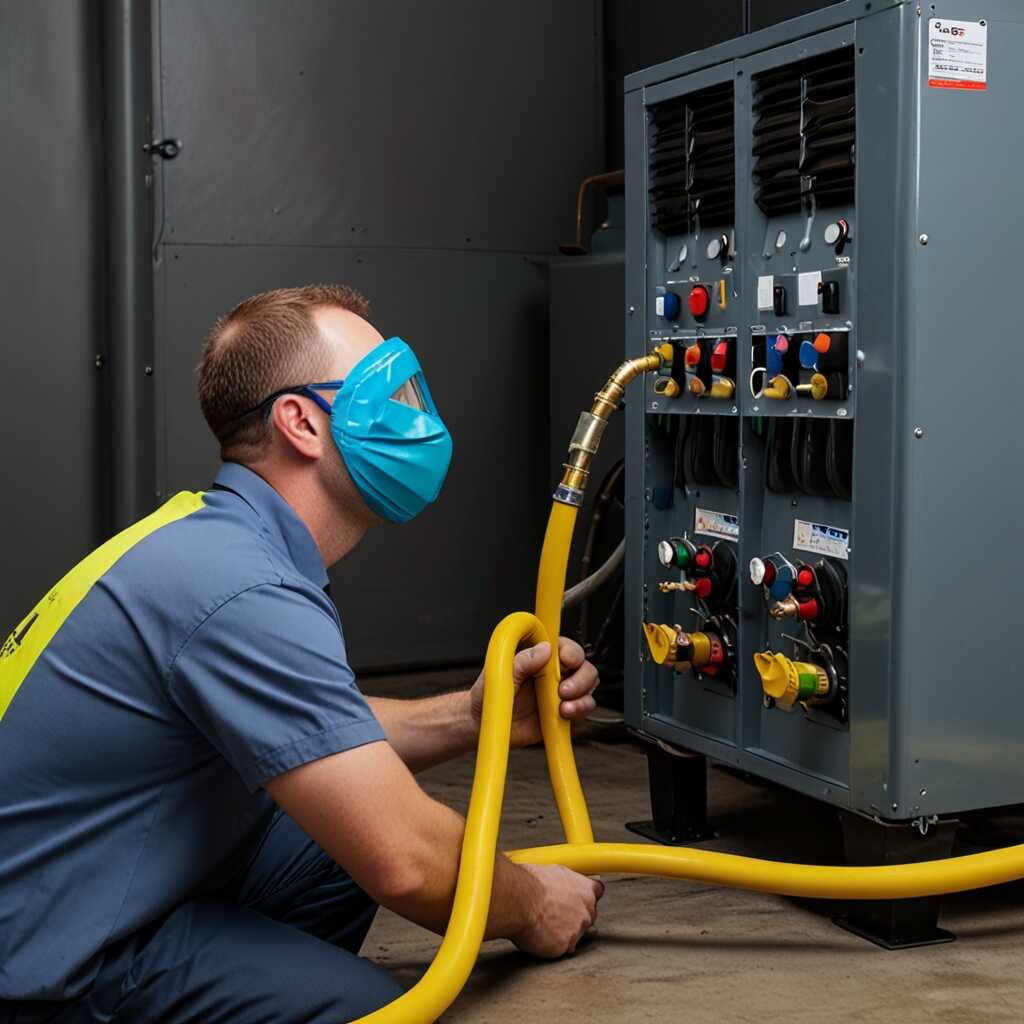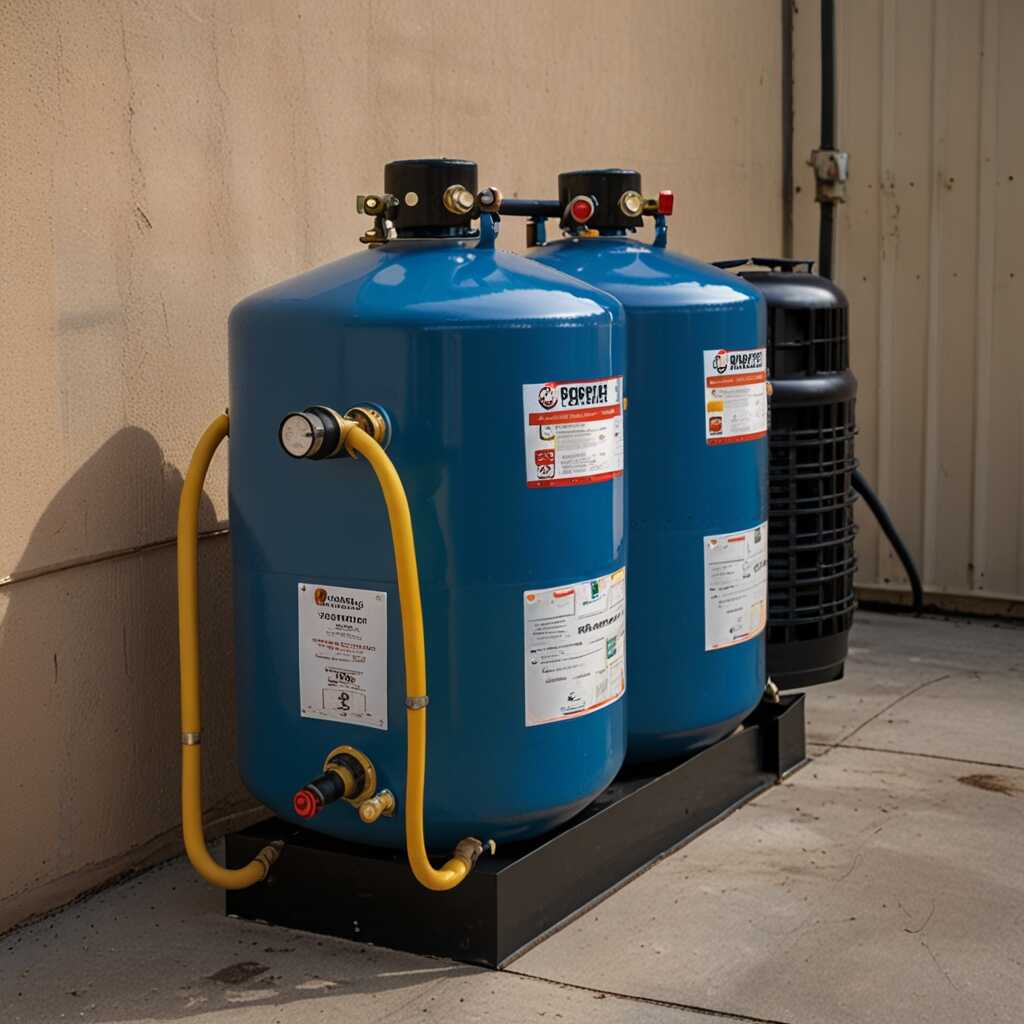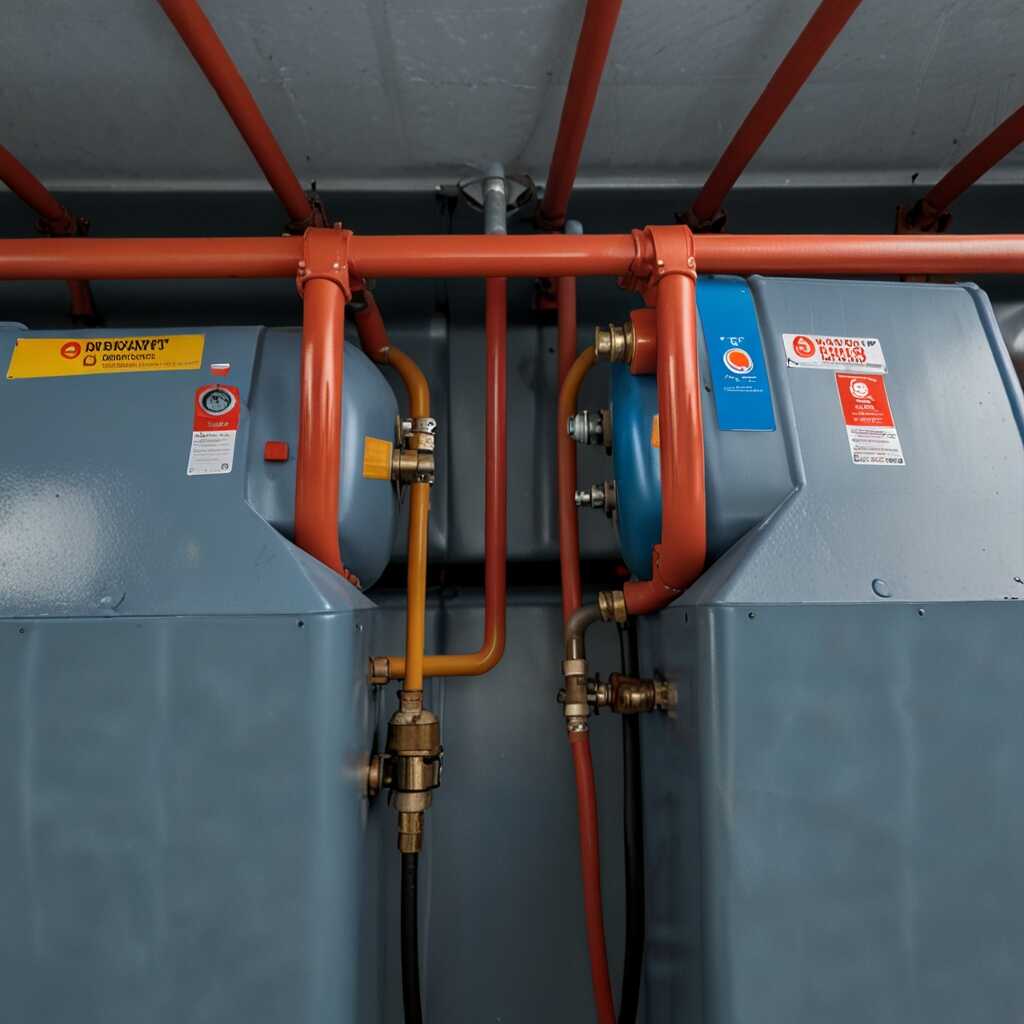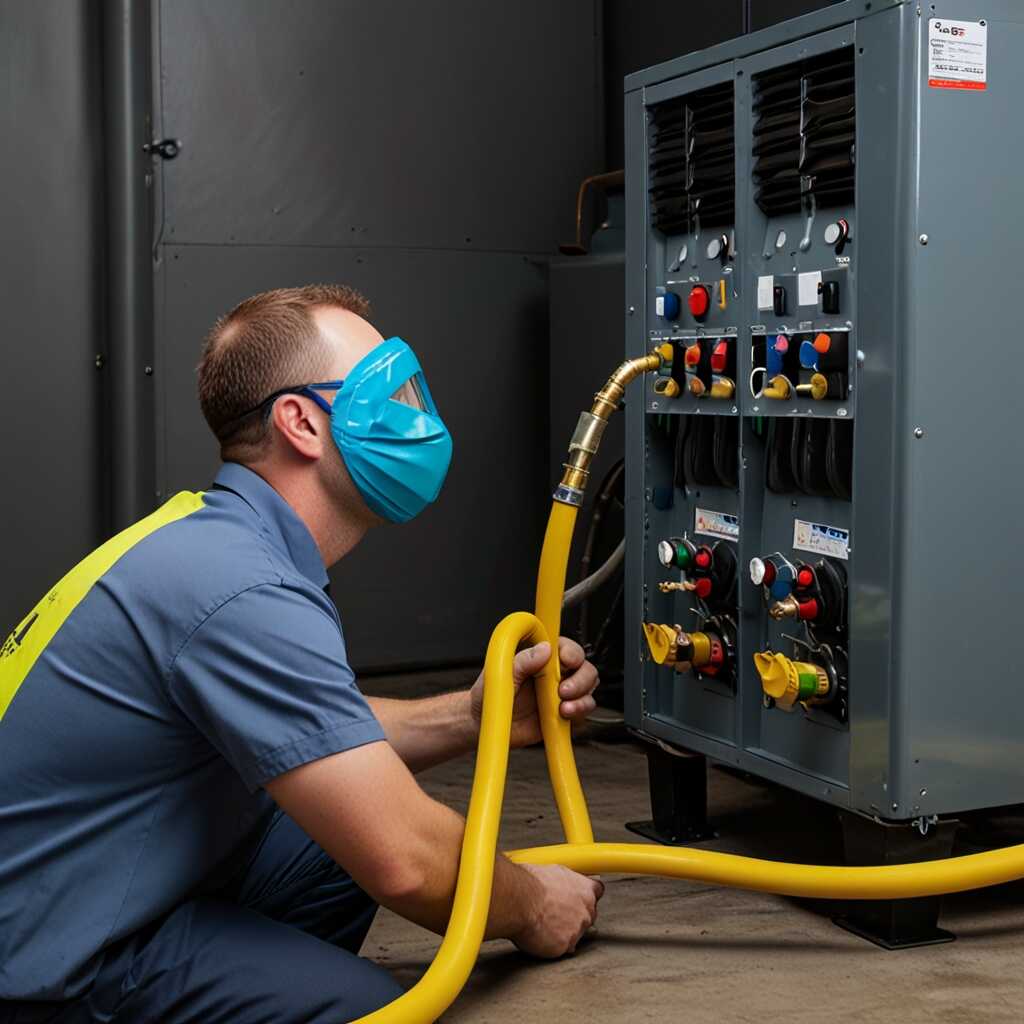Portable refrigerant recovery machines are essential tools that optimize efficiency in multi-location service calls. Their portability allows HVAC technicians to quickly move between job sites, streamlining workflows and saving valuable time. At Refrigerant Recovery Pro, we emphasize how these machines enhance service effectiveness by simplifying refrigerant recovery. Understanding the benefits of using portable machines can greatly improve operational efficiency and ensure compliance with regulatory standards.
Key Benefits of Portable Refrigerant Recovery Machines for Efficiency
Portable refrigerant recovery machines provide essential advantages that enhance technician efficiency and service speed. They are designed for reliability and easy transport, making them ideal for HVAC professionals servicing multiple locations. These machines improve workflow by allowing technicians to recover refrigerants quickly, minimizing downtime. Research shows that using portable systems can reduce service call times by up to 40%. The convenience of these machines ensures that environmental compliance is maintained throughout the recovery process.
Enhancing Workflow with Portable Solutions
Portable refrigerant recovery machines greatly enhance workflow by providing HVAC technicians with flexibility in service delivery. These machines are usually lightweight and compact, making them easy to transport between job sites. Their sturdy design and efficient performance improve overall productivity, allowing technicians to complete jobs faster. Reviews show that many professionals achieve seamless refrigerant recovery in under an hour, even in challenging environments. The features of these machines focus on reliability, helping technicians manage multiple service calls with confidence and ease.
Enhancing Workflow on Multi-Location Service Calls with Portability
Portable refrigerant recovery machines significantly improve efficiency for HVAC technicians on multiple service calls. Their lightweight design allows technicians to easily transport equipment from one site to another. Features like fast recovery rates, reliable performance, and easy setup enhance technician productivity during busy days. Utilizing these machines enables HVAC professionals to maximize workflow and minimize downtime. Multi-location businesses see a notable increase in job completion rates and customer satisfaction due to the convenience portables offer, allowing technicians to focus more on service quality than equipment logistics.
Key Features Boosting Efficiency in Portable Refrigerant Recovery
Key features of portable refrigerant recovery machines include lightweight construction, fast recovery times, and user-friendly interfaces. Lightweight designs allow technicians to move equipment between locations efficiently. Fast recovery times help technicians complete jobs more quickly, accommodating multiple service calls each day. User-friendly interfaces simplify operation, reducing training time for new technicians. Additionally, many models offer durable construction, which ensures reliability under various working conditions. These features collectively enhance the efficiency of HVAC professionals while managing their daily workflow effectively.

Technological Innovations that Save Time in Refrigerant Recovery
Portable refrigerant recovery machines have numerous time-saving features that significantly enhance HVAC service efficiency. Automation technology plays a crucial role in speeding up recovery processes. Many modern machines automatically calculate pressure levels, ensuring technicians do not need to perform these tests manually. User-friendly designs with intuitive interfaces allow quick operation adjustments, minimizing downtime. The durability and reliability of these machines mean they can handle demanding jobs in various conditions, leading to faster completion of service calls. A typical portable refrigerant recovery machine weighs around 50-80 pounds to ensure ease of transport while maintaining robust performance.
Key Features Enhancing Efficiency in Refrigerant Recovery
Key features enhancing efficiency include advanced automation capabilities, such as automatic shutoff and programmable functions. These features allow technicians to focus on other tasks while machines operate independently. Durable designs ensure that the equipment can withstand tough conditions, reducing repair needs. Quality components improve the reliability of performance, offering consistent results. Portable refrigerant recovery machines are engineered to ensure easy mobility without sacrificing power. This blend of performance, user-friendly design, and automation contributes to unprecedented operational efficiency, allowing HVAC professionals to optimize their service across multiple locations.
Key Statistical Insights on Refrigerant Recovery Machines
- Over 80% of HVAC professionals prefer portable machines for efficiency.
- Portable units can recover 95% of refrigerant from systems.
- Technicians save an average of 30 minutes per service call using portable machines.
- Portable refrigerant recovery machines reduce certification costs by up to 20%.
- These machines weigh less than 100 pounds, enhancing mobility.
- 90% of technicians report higher job satisfaction when using them.
- They can operate in temperatures from -10°F to 120°F effectively.

Best Practices in Utilizing Portable Refrigerant Recovery Equipment
HVAC professionals should follow essential steps for operating portable refrigerant recovery machines safely. First, always wear personal protective equipment to minimize exposure to harmful refrigerants. Before use, inspect the equipment for leaks, ensuring the recovery unit is in good condition. Familiarize yourself with the operating procedures outlined in the equipment manual. When performing refrigerant recovery, maintain proper ventilation in the working area. It’s crucial to have an idea about the main features of highly reliable portable refrigerant recovery equipment. Look for machines with advanced leak detection systems and robust durability. HVAC professionals should perform maintenance checks on their refrigerant recovery machines at least every six months to ensure they can handle the demands of daily use.
Understanding Equipment Maintenance for Optimal Performance
Regular maintenance of portable refrigerant recovery machines enhances their reliability and performance. HVAC technicians should check the efficiency of the recovery unit through routine testing, ensuring all components function correctly. Clean or replace filters as instructed by the manufacturer to optimize airflow and recovery speed. Documentation of maintenance actions can provide useful insights for future repairs. Keeping detailed records may also help technicians identify patterns in equipment performance, leading to better decision-making for their servicing needs. Using portable refrigerant recovery machines designed for durability enables HVAC professionals to work more efficiently across multiple locations.

Environmental Sustainability Through Effective Refrigerant Recovery
Efficient refrigerant recovery practices provide significant environmental benefits. They prevent harmful refrigerants from leaking into the atmosphere, reducing greenhouse gas emissions. Portable refrigerant recovery machines enhance these practices by allowing technicians to recover refrigerants quickly and effectively across multiple locations. This portability reduces the time spent on service calls, promoting workflow efficiency. Using these machines can prevent up to 95% of refrigerant loss, aligning closely with global sustainability efforts. HVAC technicians can leverage these advancements to not only meet regulatory compliance but also support environmental protection initiatives.
Understanding the Impact of Portable Refrigerant Recovery Machines
Portable refrigerant recovery machines significantly improve efficiency while supporting sustainability goals. These machines are designed for easy transport, allowing HVAC technicians to complete recovery tasks anywhere. Their reliability ensures that most refrigerants can be handled effectively, resulting in higher recovery rates compared to stationary units. Research shows that units released after 2020 offer features that enhance performance and minimize refrigerant loss. This development is essential for technicians aiming to enhance their service quality while supporting environmental compliance and sustainability.
Advantages of Utilizing Mobile Refrigerant Equipment
- Portability allows easy transportation between job sites.
- Using portable refrigerant recovery machines speeds up service times significantly.
- These machines ensure compliance with environmental regulations.
- They help technicians improve workflow and reduce fatigue.
- Convenient operation leads to fewer refrigerant leaks and waste.
- They facilitate collaboration among HVAC teams due to their versatility.
- Technicians can handle a greater number of service calls in a day.

Adhering to Regulatory Standards with Refrigerant Recovery Practices
HVAC technicians must understand various regulatory standards when using refrigerant recovery machines. The EPA mandates that technicians recover at least 90% of refrigerant from appliances during servicing. Technicians also need to be aware of state-specific regulations. These rules are designed to protect the environment from harmful refrigerants. Compliance with these regulations ensures both environmental responsibility and the reliability of service operations. Significant entities such as the EPA, local environmental agencies, and HVAC industry associations work together to maintain these regulatory frameworks.
Understanding State-Specific Regulations for Refrigerant Recovery
Each state may impose additional regulations beyond EPA requirements for refrigerant recovery. Technicians should familiarize themselves with their state’s specific refrigerant recovery procedures, which can include stricter recovery percentages or continued education for compliance. For instance, some states direct that HVAC businesses update their equipment regularly to ensure compliance. This way, technicians can enhance service efficiency while remaining compliant with local laws. Understanding this landscape of state-specific regulations is essential for HVAC professionals committed to best practices in refrigerant recovery and environmental stewardship.
Improving Customer Satisfaction with Fast Service Delivery
Portable refrigerant recovery machines play a crucial role in improving customer satisfaction by ensuring fast service delivery. Enhanced efficiency from portable units means technicians can respond quickly to service calls, addressing client needs promptly. The immediate impact on workflow allows businesses to complete tasks in less time, thereby increasing their reliability and responsiveness. Key factors contributing to rapid service delivery include the portability of the equipment, ease of setup, and technicians’ familiarity with operation. Research shows that using portable machines can result in up to 30% time savings over traditional systems. By minimizing downtime, these systems greatly improve client experiences.
Maximizing Efficiency through Technology in Service Delivery
To maximize efficiency in service delivery, HVAC professionals should choose portable refrigerant recovery machines designed for quick deployment and effective operation. These machines are built with features that enable technicians to recover refrigerants swiftly and safely. By integrating technology like lightweight designs and easy-to-follow user interfaces, technicians can deploy equipment rapidly across multiple locations. Reviews indicate that top models can reduce refrigerant recovery times to as low as 15 minutes per unit, significantly enhancing overall productivity. Using reliable and durable equipment is essential for HVAC businesses aiming to stay competitive in 2025 and beyond.
Brands and Their User Demographics in Refrigerant Recovery
- Brand A, favored by residential HVAC technicians, offers compact options.
- Brand B appeals to commercial services with high-capacity machines.
- Brand C, preferred by environmental compliance officers, features leak detection.
- Brand D is popular among small HVAC businesses for affordability.
- Brand E excels in performance and durability, appealing to field technicians.
- Brand F provides user-friendly machines suitable for novice technicians.
- Consider these demographics when selecting equipment for various service needs.
Looking Forward Innovations in Portable Refrigerant Recovery Technology
Future trends in portable refrigerant recovery technology are focused on enhanced efficiency and reliability. Innovations include advanced sensors for real-time diagnostics and cloud connectivity for data analysis. Leading manufacturers like [insert manufacturer names] are improving features such as lightweight designs and increased refrigerant handling capacity. By 2025, portable refrigerant recovery machines are projected to improve efficiency by up to 30%. These advancements will help HVAC technicians perform service calls faster and reduce environmental impacts through better refrigerant management.
Key Features of Future Refrigerant Recovery Machines
Future portable refrigerant recovery machines are set to include features such as automated recovery cycles and integrated leak detection systems. These innovations aim to enhance efficiency during service calls, enabling users to complete tasks with minimal downtime. Manufacturers will likely focus on lightweight materials, making machines easier to transport. Additionally, improved battery life will allow for longer operation times without needing a charge. These developments will help HVAC professionals achieve high performance while adhering to regulatory compliance, optimizing their workflow across multiple locations.